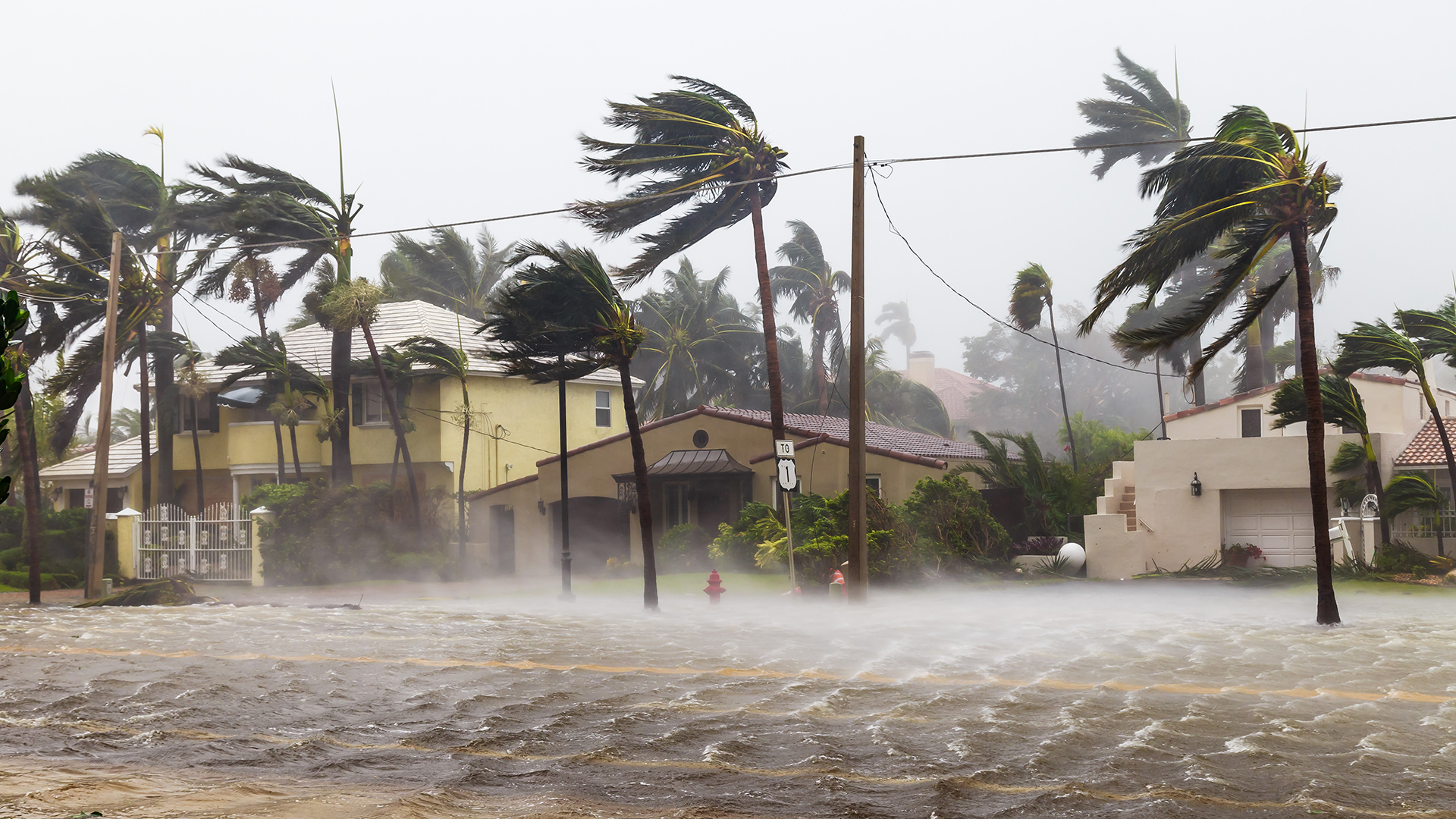Learn How to Prepare For a Hurricane and Protect Your Home
As hurricane season approaches, we must proactively ensure our safety and minimize potential losses. By following BSA Claims Solutions‘ expert guidance on creating an emergency kit, developing a comprehensive evacuation plan, and securing our property, we can face the challenges ahead with greater confidence. While the path to preparedness may seem daunting initially, breaking it down into manageable tasks will help us navigate the process more effectively. So, where should we begin our journey toward how to prepare for a hurricane?
Emergency supplies to prepare for a hurricane
Let’s stock up on essential emergency supplies to prepare for hurricane season. Hurricane preparedness is crucial, and gathering the right supplies can significantly improve our safety and well-being.
We should focus on necessities like non-perishable food, water, first-aid kits, flashlights, and batteries. It’s also wise to have a battery-powered radio to stay informed about the storm’s progress and evacuation orders.
As a claims administration and adjusting firm, BSA Claims Service understands the importance of being ready for the unexpected. By having the proper emergency supplies on hand, we can minimize potential losses and recover more quickly in the aftermath of a hurricane while maintaining customer satisfaction through our proactive approach to insurance coverage.
Evacuation plan for hurricane
While stocking up on emergency supplies is critical to hurricane preparedness, we also need to develop a comprehensive evacuation plan to ensure the safety of our clients, employees, and their families.
We must prepare a step-by-step plan outlining the safest evacuation routes, considering potential road closures and traffic congestion.
It is crucial to identify multiple evacuation destinations, such as hurricane shelters, hotels, or the homes of friends and family members in non-affected areas.
We should also establish a communication plan to stay in touch with loved ones during evacuation.
Hurricane preparedness checklist
To ensure we know how to fully prepare for a hurricane, we must create a comprehensive checklist covering all essential readiness aspects. Our hurricane preparedness checklist should include reviewing our insurance coverage to understand what’s covered and what’s not.
We must also document our belongings for potential claims administration and work with reputable adjusting firms to streamline the process. Securing our property is crucial to minimize loss and speed up recovery. We should also stay informed about regulatory forces that may affect our claims.
Hurricane emergency kit
Preparedness is the key to surviving a hurricane, and a well-stocked emergency kit is essential to our readiness plan.
When planning for a hurricane, we must ensure that our emergency kit contains all the necessary supplies to sustain us during and after the storm. A well-prepared kit should include non-perishable food, water, first-aid supplies, flashlights, batteries, a hand-crank or battery-powered radio, and essential medications.
It is crucial to have these items readily available in case of an evacuation or if we find ourselves without power or access to stores.
How to prepare for hurricane evacuation routes
Familiarizing ourselves with designated hurricane evacuation routes is critical to hurricane preparedness. Knowing the safest and quickest way to evacuate is crucial if a hurricane threatens our area. Local authorities carefully plan evacuation routes to efficiently move people away from danger zones. We should study these routes in advance and be ready to follow them if an evacuation order is issued.
Having the right insurance coverage is another vital part of hurricane preparedness. If our property sustains damage, we’ll need to file insurance claims. Working with an experienced claims administration firm like BSA Claims Service can help streamline the claims process and maximize our loss recovery.
Remember to pack emergency supplies before evacuating.
Hurricane evacuation orders
When local authorities issue a hurricane evacuation order, we must take it seriously and act quickly to protect our safety.
Evacuation orders are given when a hurricane significantly threatens an area. We should follow these orders promptly to avoid potential loss and recovery challenges.
Reviewing our insurance coverage before a hurricane strikes and contacting our claims administration or adjusting firms if we have any questions is crucial.
By staying informed about the insurance industry’s regulatory and competitive forces, we can make better decisions to ensure our protection and customer satisfaction.
Hurricane safety tips
Once we’ve evacuated to a safe location, let’s review some critical hurricane safety tips to protect ourselves and our loved ones.
First, ensure an emergency kit with essential supplies like non-perishable food, water, flashlights, batteries, and a first-aid kit.
It’s crucial to stay informed about the hurricane’s path and intensity by monitoring news and weather reports.
We should also charge our phones and other devices to maintain communication during power outages.
If we’re riding out the storm in our home, let’s stay away from windows and glass doors to avoid injury from shattering glass due to high winds.
Hurricane shelter locations
Let’s identify the nearest hurricane shelters in our area to ensure we have a safe place to go if evacuation becomes necessary. Researching hurricane shelter locations in advance is crucial so we’re prepared when a storm threatens.
Local government websites and emergency management offices provide lists of approved shelters, typically schools, community centers, or churches, that have been reinforced to withstand high winds.
When choosing a shelter, we should consider its proximity to our home, the route to get there, and whether it accommodates our specific needs, such as accessibility or pet-friendliness.
As part of our emergency supplies and evacuation planning, we should review our insurance coverage to understand potential loss and recovery scenarios if our property sustains damage.
Hurricane warning signs
Recognizing the warning signs of an approaching hurricane is critical for timely preparation and staying safe during the storm. We at BSA Claims Solutions know that understanding these warning signs can help minimize loss and ensure a smoother recovery process. Key indicators include:
- A sudden drop in barometric pressure.
- Increasing wind speeds.
- The formation of a wall of clouds on the horizon.
As the storm approaches, heavy rainfall and rough surf will intensify. Staying informed through local weather reports is essential.
We’re committed to providing exceptional claims administration and adjusting services to help our clients navigate the complexities of insurance coverage during these challenging times. Our team works diligently to ensure customer satisfaction and support throughout the claims process.
How to prepare for a hurricane using tracking tools
In addition to recognizing hurricane warning signs, we use advanced tracking tools to monitor storms and provide our clients with up-to-date information. These tools allow us to stay ahead of the curve, ensuring our clients have the necessary data to make informed decisions about their insurance coverage.
Leveraging these tools can help mitigate potential losses and streamline the claims administration process. Our team of experienced adjusters works tirelessly to analyze regulatory forces, assess the impact of hurricanes on our client’s properties, and develop strategies to maximize customer satisfaction while minimizing litigation risks.
At BSA Claims Solutions, we’re committed to using cutting-edge technology and industry expertise to support our clients through every stage of hurricane preparation and recovery.
Frequently Asked Questions
What Is the Difference Between a Hurricane Watch and a Hurricane Warning?
We issue a hurricane watch when conditions are possible within 48 hours. It’s upgraded to a warning when conditions are expected within 36 hours. A warning means it’s time to complete storm preparations and evacuate if directed.
How to Prepare for a Hurricane with Pets?
We should bring our pets inside with a carrier, food, water, and medications ready. It’s best to microchip them in case we get separated. Let’s stay safe together during the hurricane.
Should I Tape My Windows to Prevent Them From Shattering when I prepare for a Hurricane?
No, we shouldn’t tape windows during a hurricane. Taping doesn’t prevent shattering and can create more significant, more dangerous shards. Instead, we should install storm shutters or impact-resistant windows and doors well before the storm arrives.
Can I Use a Generator Indoors During a Power Outage Caused by a Hurricane?
No, we shouldn’t use a generator indoors during a power outage. It’s hazardous due to carbon monoxide buildup. Instead, let’s operate the generator outside, at least 20 feet from windows and doors.
How Long Does It Typically Take for Life to Return to Normal After a Hurricane?
Life typically takes weeks to months to return to normal after a hurricane. The extent of damage, available resources, and community resilience all factor into recovery time. We must remain patient and supportive.
Reach out to us today
We’ve covered the essentials of how to prepare for a hurricane, from emergency kits to evacuation plans. While it may seem daunting, being proactive is vital. Let’s work together to ensure our loved ones and belongings are safe. By staying informed, having supplies ready, and knowing where to go, we’ll be better equipped to face any hurricane that comes our way. Remember, preparedness isn’t just a checklist—it’s a commitment to keeping ourselves and our communities safe.
For more information on how to prepare for a hurricane and other helpful tips, visit our other blogs or check out our catastrophe services page. If you need assistance with BSA Claims Solutions, we’re here to help!





